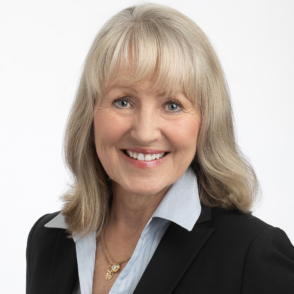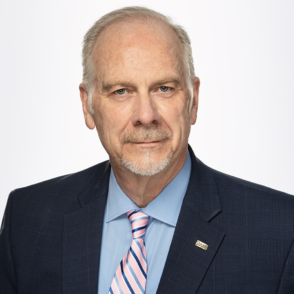By Paul G. Smith, Corporate Senior Vice President, Carrier Relations, H.W. Kaufman Group
We are pleased to share our third quarter Property & Casualty Market Overview and Forecast, prepared immediately following industry conferences and meetings that are clear bellwethers of what to anticipate.
September, as we know, is Reinsurance Month which sets the stage for pivotal year-end negotiations of January 1 reinsurance renewals followed by the early October Insurance Leadership Forum (ILF) sponsored by the Council of Insurance Agents and Brokers (CIAB).
Despite several years of underwriting discipline, rate increases, realignment of portfolios, new market entrants and other factors suggesting stabilization or tamping, we do not anticipate Q4 or 2022 retreating. Major E&S insurer partners have signaled double-digit premium growth into next year as they continue on the pursuit of profit ahead of premium while reducing volatility to secure improved margins. We do however anticipate greater divergence within the marketplace resulting in Carriers becoming more selective through emphasis on risk location, industry sector, line of business, loss experience and more.
While rate hikes may be moderating in some areas, let there be no doubt they continue to go up. Many observers suggest the compounding effect over the last few years is largely supporting this moderation, however as previously reported it is imperative to look beyond rate alone. Management of capital through selective limit deployment, laser-like application of co-insurance/deductibles, and careful consideration of policy terms and conditions are several examples of tools being used by Carriers to continue the march to sustained profitability.
We will elaborate and focus on specific sectors within this report such as Brokerage Property, Environmental and overall U.S. Commercial Lines while also providing updates on new market entrants, evolving carrier appetites, capacity and more.
As reported last quarter, a “new normal” has emerged surrounding the overall specialty insurance marketplace suggesting this market cycle is vastly different than any in recent history. The cycle is not poised to retreat, rather it is positioned to meet the many challenges created over decades of prolonged and unsustainable results. This is supported by a recent A.M. Best report that stated that while surplus lines premiums grew over 17% in 2020, underwriting profit has been “elusive in recent years due to losses driven by secondary perils such as wildfires and convective storms.” This supports our theory that both of these perils have the potential for catastrophic loss thereby redefining the historical definition of CAT to include more than Wind, Flood and Earthquake.
RATE
Commentary surrounding rate needs to be considered based on various underlying criteria as the topic cannot be summed up or viewed from a macro perspective. Excess Casualty, CAT exposed Property, Cyber and certain Management Liability lines are the extreme, while other lines are generally more stable. Equally as important, certain verticals remain more challenging than others across all lines such as Public Entity, Residential Construction, Habitational, Transportation and anything exposed to wildfire.
While E&S Carriers are generally willing to entertain reasonable or smaller increases on desirable/targeted areas where they want to grow their book, they are holding the line on all other elements of their portfolio, which is best described as maintaining hard market conditions.
Recently, rating agency Fitch advised, “Performance changes in E&S should outpace standard P/C market improvement for the next two to three years,” suggesting we will continue to see prudent and disciplined underwriting for the foreseeable future.
Underpinning the need for continued rate is global reinsurance with analysts at Moody’s recently commenting “Global reinsurance rates are likely to continue rising next year, in the low- to mid-single-digit percentage range.” These signals being reported from various sources are resulting from continued high demand for (re)insurance as the global economy continues to recover from the pandemic coupled with increasingly difficult to predict natural catastrophes notwithstanding many other concerns, some of which are highlighted in our summary.
CAPACITY
While capacity continues to enter the marketplace, it’s important to underscore that its backers, which include private equity, pension funds and very experienced industry entrepreneurs, demand continued underwriting discipline to maintain long overdue favorable margin returns. As covered by this publication in earlier reports, capacity in general is not of concern with the exception of only the largest insureds who have procured total market capacity in the past. The vast majority of buyers will have more than adequate capacity to cover their exposure, albeit through participation of more insurers to meet the desired limits.
Since our last report we have seen Carriers completely exit particular sectors and lines of business where returns have not met expectations. Such abrupt exits allow these providers to deploy capacity in other areas where they believe it will yield greater return or allow them to improve risk diversification, ultimately improving returns. Equally, other Carriers have entered this very same space sensing an opportunity with more limited supply or in an effort to diversify their portfolio. The fluidity of the marketplace is unparalleled necessitating daily monitoring of the many variables of comings and goings, changing appetites and new or expanded participants.
It was reported by A.M. Best in September that “changes in company risk appetites, along with hardening rates for many commercial lines of coverage, creates an environment with an acute need for creative market and product-oriented solutions – the hallmarks of surplus lines carriers.” Therefore, within this everchanging landscape of capacity ebbs and flows, carriers are increasing their reliance upon distribution partners such as Burns & Wilcox with greater binding authority on small to medium size business and brokerage solutions on larger risks. We believe this trend will continue, particularly for experienced specialty distribution partners such as ourselves who have gained the trust of the capital providers to manage their capacity profitably.
TERMS & CONDITIONS (T&C)
Consistent with earlier reporting, policy language or terms and conditions are continually in motion with Carriers managing exposure and quantifying risk on an ongoing basis. It has arguably never been more important to review policy language and examine what you expect to ensure your risks are adequately covered. Standalone markets for Cyber, Environmental, Professional, Construction, Transportation, Marine, Energy and more continue to expand to address the specialized needs of the risks these exposures bring to the market.
Specific attention should be paid to exclusions, sub-limits, deductibles, and coinsurance clauses while also closely comparing options offered from various insurers as each will have nuances. Unlike the admitted marketplace whereby many policy forms are consistent from industry tested organizations such as Insurance Services Organization (ISO), the non-admitted marketplace relies heavily upon custom policy language underscoring the importance of carefully reviewing and understanding insurance contracts.
Unlike many recent insurance market cycles where rate was the driving factor, distinction should be made regarding our current market cycle as T&C are being used equally, if not more than rate as an underwriting tool. Most would argue that rate will fluctuate over time while T&C will remain intact with few exceptions, yet another example of the lasting effect of this market cycle.
NEW MARKET ENTRANTS
The trend that started last year continues in full force into year-end 2021 with many previously identified organizations now actively underwriting business. Many of these companies as previously reported are now actively writing risks such as Vantage, Core Specialty, Westfield and more.
Startups:
The development of new MGA/MGU platforms utilizing hybrid Carriers as fronting paper continues with great vigor, as does the refinement of InsurTech firms. Both continued their trajectory in Q3 with Acrisure-Re CEO Simon Hedly recently stating “in just a few short years, the number of fronting companies—both pure fronts and hybrids—have swelled from about two or three to about 20 today.” A proxy of sorts shows that the continued evolution of the MGA/MGU space will further necessitate rated insurer paper and access to the reinsurance marketplace to fulfill market demand.
Expanded Appetite:
ProSight – In early August this insurer stopped trading as a public company and was taken private as ProSight Global pivoting to a structure largely focused on the specialty E&S market. The buildout includes Property, Primary and Excess Casualty as well as Professional Liability lines under the direction of various industry veterans who joined the Jonathan Ritz and Stan Galanski to lead organization.
In addition to brokerage, they are also entering the ever-popular binding authority sector, providing access to the three most important elements of the specialty sector: Programs, Brokerage and Binding. While this is a significant departure from their past, whereby they primarily focused on Program-related businesses, it is closely aligned with our distribution model and a welcome opportunity.
Global Indemnity – This insurer, which is now under the leadership of newly minted CEO David Charlton who was previously with Westchester and USLI, is adapting its strategy to build new core segments such as Professional, Environmental and Excess Casualty. They are also adapting their strategy to make Farm/Ranch, Equine, Property and Personal Lines core businesses as recently reported during their investor day in September. This new course that Charlton has chartered includes all of the various Global Indemnity companies such as Penn America, Diamond State, United National and American Reliable.
Also reported during their investor day was their piloted strategy of working with select wholesalers, including Burns & Wilcox, to focus on eight segments of specialty business including: Auto Services, Cannabis, Vacant Land & Building, Parking & Valet, Mercantile, Special Events, Artisan Contractors and miscellaneous classes including Professional.
James River – As reported last quarter, this traditional brokerage-only Carrier has expanded into the binding authority arena utilizing API-capable portals providing them an expanded charge into this ever more popular element of specialty insurance. Their expanded palette will create greater spread of risk in an extremely valuable and increasing fundamental element of E&S allowing its distribution partners underwriting authority.
Additionally, they received welcomed news from A.M. Best on September 30 of a revised outlook from negative to stable. This improved forecast comes on the heels of a loss portfolio transfer earlier in the summer when they transferred much of their commercial auto reserves, plagued with recurring adverse loss development, to a third party.
Skyward – The late 2020 rebranded Houston International Insurance Group (HIIG) to Skyward Specialty under the leadership of CEO Andrew Robinson has been repositioning its portfolio under his watch and has emerged as a welcomed partner that is intently focused on the E&S sector. Recent reports include various capital fund-raising initiatives for the first half of next year that will support its continued expansion into new lines of business such as Inland Marine and other products including InsurTech partnerships.
This insurer with an extremely diverse book of business has been adding talented leadership from many areas of the industry including a President of Specialty Lines from QBE, a Healthcare leader from One-Beacon and industry veteran Rick Childs to lead Construction. We are closely monitoring the rapid expansive growth of Andrew’s team as he continues to reposition the organization to become a much more fundamental part of the E&S sector than it was under its previous brand and leadership.
Q3 OVERVIEW & Q4 FORECAST (US)
Our industry leading subject matter experts dissected the marketplace and provided insights on the Burns & Wilcox Eye on Q4 2021: Specialty Insurance Overview webinar, hosted October 7, 2021. They provide further guidance as follows delving deeper into specific areas with advice and outlook.
Click here to view the complete webinar.
Personal Insurance:
We continue to see rate increases for residential property in all parts of the country. Average increases in non-catastrophe areas are 5-10% while more catastrophe prone areas are seeing increases of 15% and up. There does not seem to be an indication that this trend will end anytime soon.
In addition to rate, we are seeing an increase in wind deductibles percentages in most coastal states. Markets are looking to move to minimums of 3% and moving toward 5% in parts of Southern Florida, barrier islands and other areas where homes are directly on the coast with no protection. States in the Midwest are also being impacted by wind/hail deductibles.
Market capacity is still tight in many parts of the country. Adverse modelling results are making it difficult for markets to continue writing business in Gulf states, particularly Mississippi and Louisiana. Many carriers are beginning to reach full capacity in a variety of catastrophe prone states and we are seeing new business moratoriums from many carriers in California and coastal states.
The good news is capacity is still available. MGA’s who have produced positive results for their carrier partners still have the ability to write in all states.
As for other factors impacting the market—with so much disruption from non-renewals, moratoriums, carrier withdrawals etc., there is an increase in homeowners seeking coverage. This has led to a general tightening of underwriting guidelines. Carriers are seeking quality accounts, with a preference for high-value homes and newer homes build within the last 15–20 years. This is making it more difficult for consumers with lower-value homes, older homes and prior claims history to find the coverage they desire.
Contributor: Bill Gatewood, Corporate Senior Vice President, National Personal Insurance Practice Leader, Burns & Wilcox
Commercial Property:
One of the more interesting trends we have seen is that many Carriers are more interested in supporting Casualty as opposed to Property, where capacity is particularly tight. Other Carriers are venturing more into specialized industries, such as Construction.
Perhaps the best news is that a large number of new locally owned businesses have been formed in the wake of the pandemic across multiple industry sectors. While Construction is one example, Carriers are choosing specialized areas of small business to concentrate on as they refine their appetites for risk and opportunities.
Given these and other market challenges, brokers and agents have a great opportunity to find the solution that best fits their clients need. However, it may take more time and consultations with your clients than in years past.
Clients should indicate how they plan to mitigate risk with any policy submission. The best way to do this is to provide detailed information such as:
- Added narrative
- Loss control report
- Photos from past claims
- A description of past and present risk mitigation techniques
- A transparent breakdown of losses
For more information, click here to view our Commercial Property Insurance video highlight.
Brokerage Property and Casualty:
In past years it was relatively easy to get $10 million of coverage at a single location on the Property side. Now, it is more difficult to secure that level of coverage and it takes three or four different Carriers to fill out coverage limits. Plus, even though there are more carriers fighting for business in some areas, higher minimum premiums are likely to be around for a while.
In addition, as we have learned, there really is no “normal” weather season that comes with a predictable number of catastrophic storms. Hurricanes receive deserved attention, but windstorms are the cause of a rising number of clams in Plains and Midwestern states from Colorado to Nebraska to Ohio.
Wildfires continue to alter the appetite for risks that Carriers have in California and parts of the West Coast. What is available in these areas is smaller lines with very large deductibles. If coverage is even available, heavy underwriting is required with loss control information needed. Moratoriums may be required for high-risk clients.
Burns & Wilcox Brokerage is increasingly using a risk meter system to check an address for wildfire and flood zones, crime scores and more. These types of tools are extremely useful when helping agents find solutions for their clients. Hurricanes Ida, which made landfall near New Orleans in late August 2021, hammered large swaths of the Gulf Coast and Florida. Yet the storm damage cause by the rain spread over a much wide area. Hurricane Ida was more than an $80 billion storm, with significant flooding all the way up to the Northeast.
Following a number of consecutive destructive hurricane seasons, the market has adjusted to the increasing number of storms. This has led to stabilized prices for Property policies in many parts of the country. One exception is Louisiana where catastrophic storms appear more common than ever given recent weather patterns.
Lastly, winter storms can be ‘named storms.’ The destructive nature of snow, ice and freezing temperatures, such as with Uri that caused $20.4B in damages, has drastically changed the marketplace in Texas once again.
For more information, click here to view our Brokerage Property Insurance video highlight.
Contributor: Teresa Cowper, Broker, Property, Burns & Wilcox Brokerage, Atlanta, GA
Professional Liability:
Hardening market conditions experienced during the first half of the year within Directors & Officers, Healthcare and Cyber Liability insurance remained during the third quarter of 2021. Ransomware attacks continued to impact organizations in all industry sectors and sizes throughout the world prompting the United States Department of the Treasury’s Office of Foreign Assets Control (OFAC) to issue an Updated Advisory on Potential Sanctions Risks for Facilitating Ransomware Payments. This updated advisory was issued on September 21, 2021 and superseded its previous October 1, 2020 guidance. OFAC also added a virtual currency exchange incorporated in the Czech Republic – with physical offices in Moscow and Saint Petersburg, Russia – to the Specially Designated Nationals and Blocked Persons List (“SDN List”), a first of its kind. This move further places insurance coverage for ransomware payments under the microscope of the U.S. government calling into question the future insurability of this growing risk. The total cost of ransomware damages is expected to reach $20 billion in 2021.
One troubling but emerging trend to monitor during the course of Q4 will be a shortage of employees filling roles within healthcare, hospitality, retail and a variety of other industry segments. The specific reason for role vacancies may vary by industry, however the consequence of these staffing shortages could result in errors and omissions, medical negligence, and a variety of employment practices related lawsuits.
The current hard market environment is anticipated to carry on through the remainder of 2021 and well into 2022.
Contributor: David Derigiotis, Corporate Senior Vice President, National Professional Liability Practice Leader, Burns & Wilcox
Transportation Insurance:
During the third quarter 2021, and as we approach the end of the year, we have seen a continuation of “market moderation” in the Transportation Insurance environment. While there remains the typical spectrum of carriers and risk appetite (preferred, standard, and distressed), rates and risk selection behaviors have seemed to flatten out relative to past periods. Most carriers have stayed the course, but one major E&S Transportation carrier did introduce significant changes to its appetite and production platform.
Most of the direct-to-consumer markets have remained highly competitive and we have witnessed a couple of new “program” type solutions enter the segment. Not surprisingly, these new entrants are doing so at rates lower than market. In some cases, these programs have strict requirements and in others, it is purely a market share grab given the current high-rate structures. Without underlying results to warrant lower rates we must resist the temptation to call these new entrants competitors—as like in the past they will likely fade away over time.
Most of the tenured direct-to-consumer and highly competitive programs tend to focus on non-fleet and binding type risks. It has made this segment difficult at many levels for wholesalers. A few key carriers continue to be successful in this lane and together we aim to place this business, but it has become challenging. Our best and most successful opportunities have come from our pursuit of fleets as well as commercial and public business.
Through the first nine months of the year, the economy has certainly led to significant growth in the transportation segment. We have seen existing trucking operations grow rapidly and despite the rates, new operations start up like never before.
The Burns & Wilcox Transportation Practice Group has grown significantly this year and we expect to continue at a rapid pace. Even in the face of some economic uncertainty, we believe there is much pent-up demand for transportation business and the accompanying insurance.
Contributor: Gene’ Cain, Broker, Transportation, Burns & Wilcox Brokerage, Atlanta, GA
Environmental Insurance:
Climate change is increasingly linked to environmental contamination, which is placing pressure on the Environmental market. Floods and wildfires resulting from changing weather patterns have led to a significant number of new claims, due to the consequent spread of contaminants from these events.
Increased attention to the harmful human health effects from the presence of “forever chemicals,” such as Per- and polyfluoroalkyl substances (PFAs), has also driven claim activity. These substances have been manufactured and used in a variety of industries around the globe, including, for example Teflon in non-stick pans, as well as firefighting foam. There is evidence that exposure to PFAs can lead to adverse human health effects, and the discovery of their tendency to bioaccumulate and affect surface and groundwater systems has created greater exposure to environmental damage for clients.
Rainfall has been ticking up in recent years, and with heavy rains comes humidity and mold. There have been many expensive mold claims in the U.S. in 2021, which makes sense given how destructive it can be to buildings, and how dangerous it is to personal health.
The chemical glyphosate, commonly found in weed-killing products, is another forever chemical which has made its way into the food supply. Even COVID was an environmental issue, especially in the early days of the pandemic, when there was uncertainty with how it was spread. While some of those virus-related claims have decreased as 2021 has progressed, it is still a threat. However, the needs for health and safety have led to a growth in such markets as residential contractors, janitorial and environmental service providers who have been in high demand. This has created new needs for Environmental policies, resulting in more submissions.
The Environmental sector comes with its own unique challenges as many coverages require a supplemental application that involves a detailed breakdown of potential risks, especially for first timers. Businesses that have a contractual or regulatory requirement to purchase Environmental insurance may also be asked to provide detailed information before being considered, such as: details on the contractual and regulatory requirements, current environmental risk assessment reports, policies and loss runs.
For more information, click here to view our Environmental Insurance video highlight.
Contributor: Timothy Donnellon, Senior Broker, Environmental, Burns & Wilcox, Charleston, SC
Q3 OVERVIEW & Q4 FORECAST (CANADA)
Property & Casualty Insurance:
Businesses that had been impacted adversely by the pandemic continued to reopen and expand operations during Q3. This included expanding hours back to pre-pandemic levels for some, and the relaxation of other mandates including capacity within an indoor space. This has led to an increase in the number of submissions for coverage or renewals we are seeing across a broad swath of industries.
However, this increase in policy demand comes with caveats. The market for P&C coverage for every industry remains extremely tight, both in terms of capacity and its impact on higher premiums. Brokers and carriers are extremely price conscious although rates have begun to stabilize. This stabilization of premiums and renewal costs could continue in the months ahead, especially since this hard market was exacerbated, not started by the pandemic. The hard market began back in 2017-2018 for most industries.
Moving forward, our expectation is that rates do level off further, leading to increased competition for coverage. Even with continued mandate loosening it is highly unlikely we will see a “soft” market soon, and any increases in capacity will be limited. However, clients determined to be a lower risk are likely to have more policy options from multiple carriers.
Contributor: Patricia Sheridan, Director, Ontario Commercial Insurance, Burns & Wilcox, Toronto, Ontario
Professional Liability:
Private company D&O policies have continued to be a challenge for most industries three quarters into 2021. This is true even as market demand has increased with more businesses rehiring and ramping up operations 18 months into COVID. The result is an influx of new purchases requiring this type of coverage. Capacity is likely to remain tight for D&O for the foreseeable future.
The story is similar for public company D&O policies. There is even higher demand than on the private side in some instances, but extreme selectivity is being practiced by carriers. This is especially true for Employment Practices Liability opportunities.
Client demand for Cyber insurance has been steadily rising for the last few years, and that has continued in 2021 even with macro industry challenges. This demand is likely to continue even as the market applies more stringent security requirements for higher risk clients. This places a higher burden on brokers to ensure that their clients fill out submissions fully.
We encourage all brokers to work with their clients to ensure submissions are properly completed given the competition for capacity. Carriers will not hesitate to non-renew or decline a submission if controls are not appropriately provided. Capacity and premiums are likely to stay tight in cyber in the months ahead.
Finally, Health and Wellness insurance opportunities continue to grow in Canada with some domestic carriers choosing to strategically exit the class, or severely restrict coverage. As with Cyber, we do not anticipate any changes to this trend in the short-term.
Contributors: Danion Beckford, Senior Underwriter, Professional Liability, Burns & Wilcox, Toronto, Ontario
Abby Egeh, Senior Underwriter, Professional Liability, Burns & Wilcox, Vancouver, British Columbia
Transportation Insurance:
There were a couple of main trends we witnessed in Transportation Insurance in Q3. Excess Umbrella capacity is shrinking and prices have risen, often by double-digit percentages year-over-year. With tight capacity, coverage is not always available, especially for applicants deemed to be higher risk.
Motor Truck Cargo rates were steady with capacity opening up in certain segments of the market. The increased capacity in some areas is limited—still this is an encouraging sign for the months ahead. We do expect that competition for new policies and renewals will continue to heat up in Q4 and into 2022, which could result in downward rate pressures.
Brokers and clients will not be so lucky in the Excess Umbrella market where we expect market conditions to remain tight with scarce capacity for many, especially for those policies in the lower layers of the liability tower. Where capacity is available, coverage levels are likely to be lower.
Contributor: John McGlynn, Director, Transportation, Burns & Wilcox, Toronto, Ontario
Environmental Insurance:
The Environmental Impairment Liability space is a precarious one for businesses that need coverage. There is an interesting and unique trend of a tight market for capacity but a soft one for pricing. The unusual nature of this trend has led to some challenging new business negotiations given this competitiveness on cost. We will follow market trends closely and adjust pricing as needed while remaining in touch with our broker partners.
By further strengthening these broker relationships, we have been able to achieve some heartening wins with renewal quotes running at a 0-10 percent average increase and high retention numbers. There was a short period of runoff which has calmed down in Q3.
Looking toward Q4 our belief is that rates will continue to erode although this is not expected to signal a large-scale softening phase. Brokers need to be aware of the underwriting that is taking place on their clients’ Environmental risks since some carriers have grossly underpriced policies. This implies either a lack of understanding of the current market or a weakness in technical review capabilities. Our strong relationships can help find a workable solution.
Brokers will experience primary market fatigue even as the MGA space in general has shown strong technical expertise and capabilities. Burns & Wilcox is well positioned to aid and provide guidance in these areas for profitable submissions that meet client needs.
Contributor: Karim Jaroudi, Manager, Environmental, Burns & Wilcox, Toronto, Ontario
Personal Insurance:
There are opportunities for brokers even in a tough Personal insurance marketplace. The reduced capacity has created an environment for some brokers to become “heroes” for their clients by placing difficult to obtain coverages. Here again, the quality of relationships with other industry leaders and the need to help brokers ensure the completion of quality submissions matter.
We have seen an increase in the number of submissions with unconventional mortgages or three or more total mortgages. Within the current environment these can be hard to place. There has also been an increase in the number of dwelling submissions that have experienced losses. While these examples present challenges, they also offer opportunities for brokers to gain long-term business if successfully placed.
It is important to remember that the pandemic has resulted in significant job losses, meaning many of our personal policy clients are looking for ways to supplement their income. One way to find new revenue without significant cash output is to utilize online rental sites like Airbnb and HomeAway to book short-term rentals for owed properties. These examples come with added risks even as such submissions are also rising.
The standard market is tightening its collective appetite for new or renewed policies, particularly Lloyd’s of London. That will not change in the short-term. The expectation is that reduced market capacity in the personal lines space will continue through the end of 2021 and into 2022.
Contributor: Wendy McCormack, Senior Underwriter, Personal Lines, Burns & Wilcox, Toronto, Ontario
Q3 OVERVIEW & Q4 FORECAST (LONDON MARKET)
There were no significant changes in the London market over the last quarter in terms of its approach to the
North American market. In the binding authority segment, capacity remains tight and syndicates are not looking to expand their U.S. CAT exposure at this time.
It is still early to understand the extent to which Hurricane Ida will impact the Lloyd’s market, but early view is that many Lloyd’s syndicates feel Ida may push their North American property book into a loss-making position in 2021. This is likely to lead to a more conservative approach to U.S. wind exposure in most syndicates’ 2022 business plans. For the most part, syndicates are looking to keep constant or reduce their exposure to the Southeastern U.S. wind for 2022. This will likely keep aggregate tight and rates increasing in many wind-exposed CAT areas. It does not appear there will be significant new Lloyd’s capacity released into the U.S. binding authority market.
The direct & facultative market continues to show plenty of capacity, with rate increases flattening for many risks. As stated earlier in the year, we have seen a number of new London market carrier entrants deploy capacity into the open market for larger property risks. Many syndicate underwriters feel that rate increases on larger open market risks will be measured going forward as a result of the abundant capacity.
We do not expect to see a significant change in the London market throughout the remainder of 2021. We expect to see further capacity constraints and increasing rates in many areas of the U.S. and Canada. While we do see rate increases coming down in open market transactions, we still expect overall tight capacity and continued flow of business into the London market.
Contributors: Chris Zoidis, Executive Vice President, H.W. Kaufman Group
James Stevenson, Managing Director, H.W. Kaufman Group International
CONCLUSION / SUMMARY
Despite the headwinds of:
- Social inflation (nuclear verdicts/runaway juries)
- Litigation funding
- Increased frequency & severity of natural catastrophes
- Core inflation
- Aging population/infrastructure
- Prior year loss development
- Decades of depressed rates
- Supply chain disruption
- Global pandemic
The E&S market has no indicators of slowing with strong growth anticipated well into the foreseeable future. This sector of the overall P&C insurance industry is best poised to develop products and solutions to address the increased awareness of risk drivers, some of which are mentioned above.
However, a natural result of surplus lines premium growth is the abundance of submission volume as recently underscored by A.M. Best stating “specialty insurance writers continue to report that they are being flooded with submissions as the economy reopens and standard market companies continue to revisit their appetites.” With underwriting resources stretched as they are, the necessity for complete, thorough and detailed applications and submissions has never been greater. Bandwidth is a real concern therefore thoroughness and detail are no longer optional as you run the risk of not being considered.
Our arsenal of tools allowing this innovation stems from many factors, most notably improved risk diagnostics through technological innovation and data analytics. Risk identification, quantification and modeling has never been more robust with development continuing at breakneck speed. The E&S sector by definition is the incubator of the industry using both traditional and advanced sources to develop new products, solutions and tools to address the ever-increasing risks we face socially, professionally and personally. The capital investment within Burns & Wilcox to lead the pack in this revolution has been underway for years enabling us to source the best solutions for our clients through deep analytical and focused analysis.
Equally, our team is ever expanding in all areas of the organization bringing together both talented industry veterans and emerging thought leaders to increase our footprint. We are dedicated to developing specialty insurance solutions needed in today’s complex and fast paced environment and we welcome the opportunity to help you navigate the increasingly complex and evolving specialty marketplace.
Thank you for your continued support and the trust you have placed in us during this prolonged and turbulent market cycle.
Disclaimer: The above information has been prepared solely for the purpose of sharing general information regarding insurance and business practice management issues. These are just our opinions and are not intended to constitute legal advice or a determination on issues of coverage.









